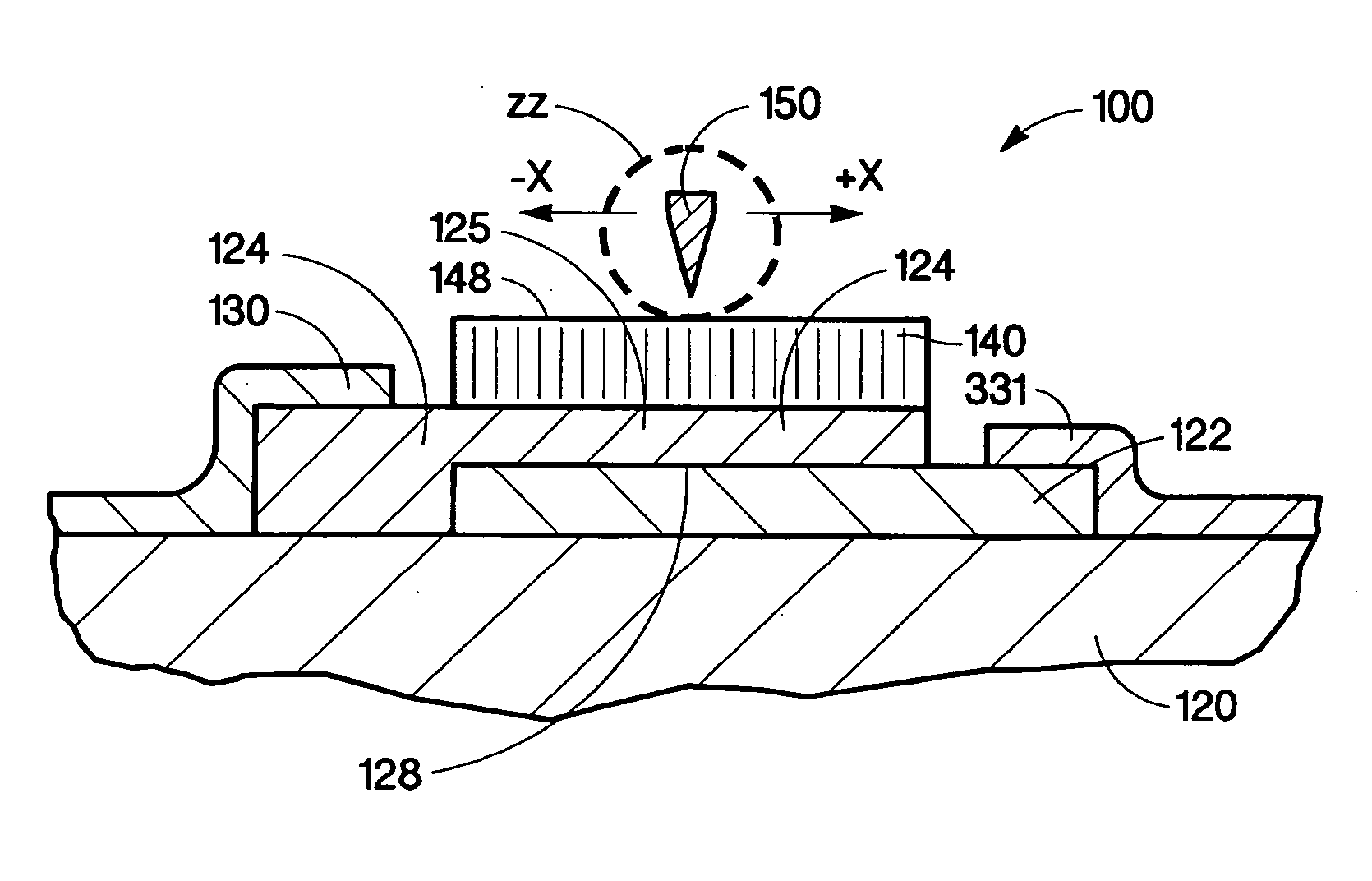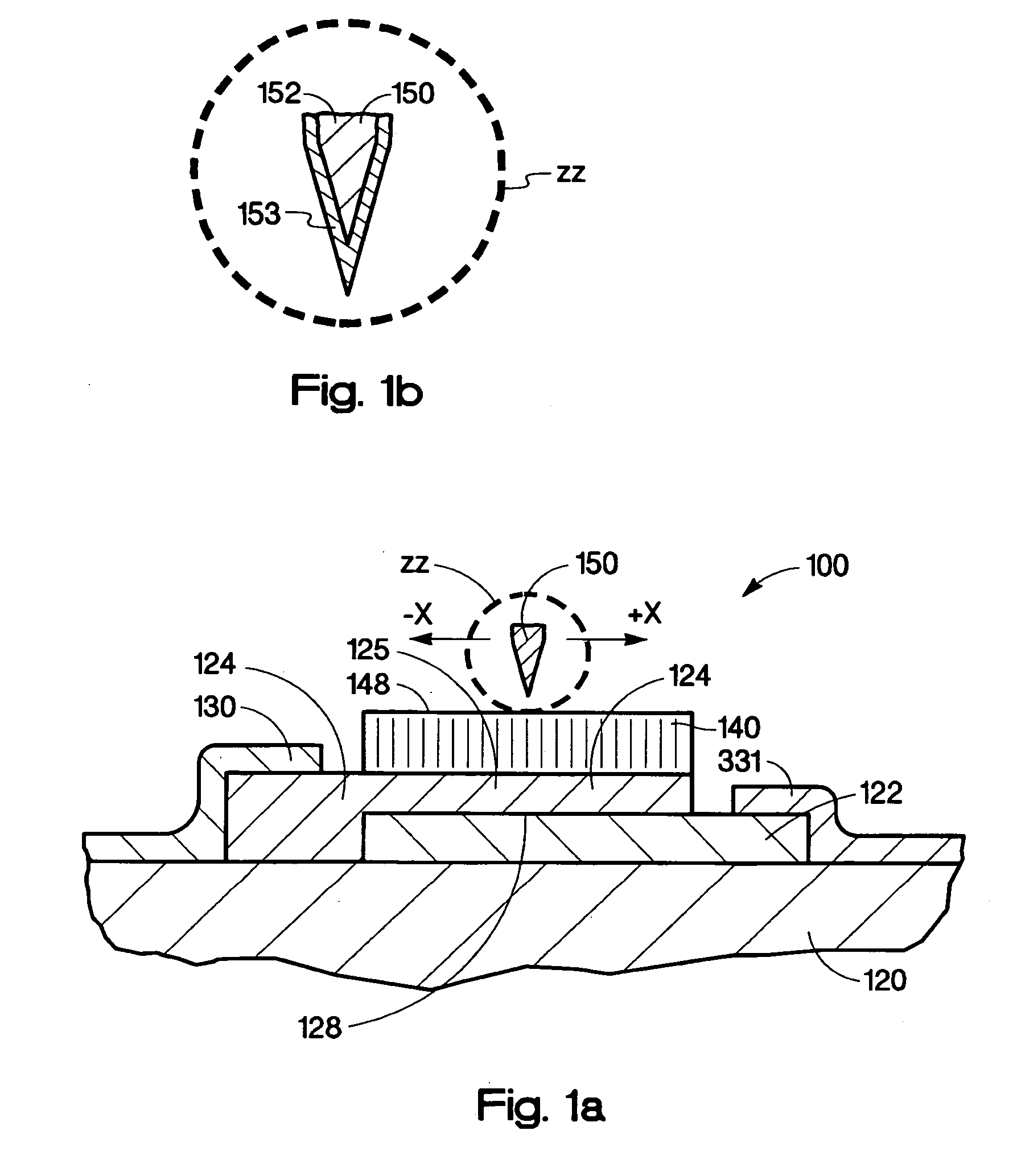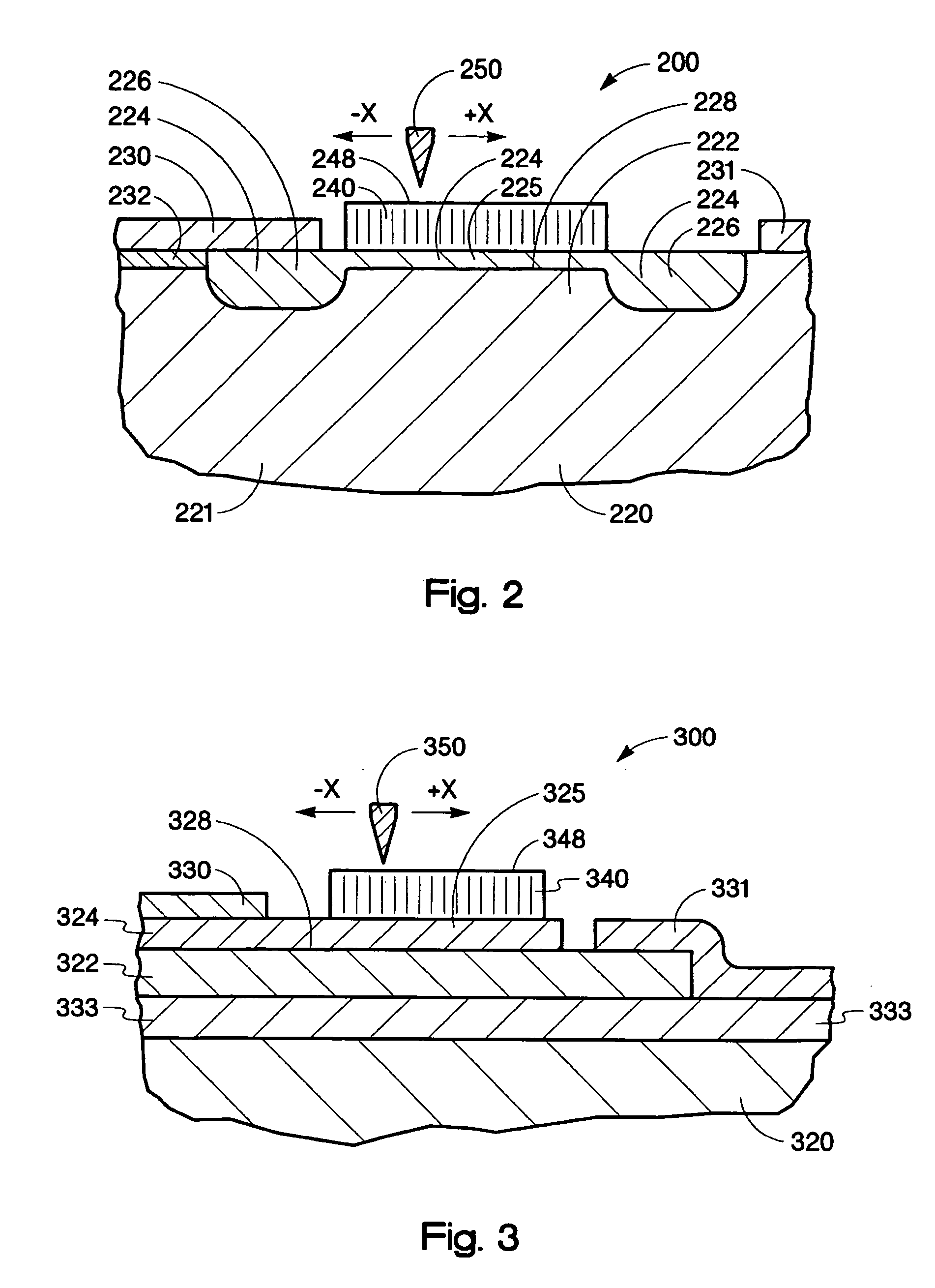Storage device with charge trapping structure and methods
a storage device and charge trapping technology, applied in the field of storage devices with charge trapping structure and methods, can solve the problems of affecting the reliability of the storage device, the processing speed is not high enough, and the storage capacity is typically achieved in a few hundred megabyte rang
- Summary
- Abstract
- Description
- Claims
- Application Information
AI Technical Summary
Benefits of technology
Problems solved by technology
Method used
Image
Examples
Embodiment Construction
[0020] The present embodiments of this invention are directed to memory storage devices utilizing a charge trapping structure. The bit size of current solid state memory devices generally is limited by the dimensions capable of being resolved by the various photolithography technologies being utilized. The present invention utilizes a nano-scale conductive tip as a gate to control the localized charging and discharging of the charge trapping structure. In addition, in the present invention the nano-scale conductive tip and the charge trapping structure move relative to each other. The bit size of the present invention is not limited by photolithographic resolution but is generally determined by the size of the tip. Data may be read from and written to storage locations using the nano-scale conductive tip as a control gate. Accessing a specific storage location typically involves displacing the tip in either one or two dimensions.
[0021] An embodiment of memory storage device 100 of ...
PUM
| Property | Measurement | Unit |
|---|---|---|
| voltage | aaaaa | aaaaa |
| voltage | aaaaa | aaaaa |
| voltage | aaaaa | aaaaa |
Abstract
Description
Claims
Application Information
 Login to View More
Login to View More - R&D
- Intellectual Property
- Life Sciences
- Materials
- Tech Scout
- Unparalleled Data Quality
- Higher Quality Content
- 60% Fewer Hallucinations
Browse by: Latest US Patents, China's latest patents, Technical Efficacy Thesaurus, Application Domain, Technology Topic, Popular Technical Reports.
© 2025 PatSnap. All rights reserved.Legal|Privacy policy|Modern Slavery Act Transparency Statement|Sitemap|About US| Contact US: help@patsnap.com



